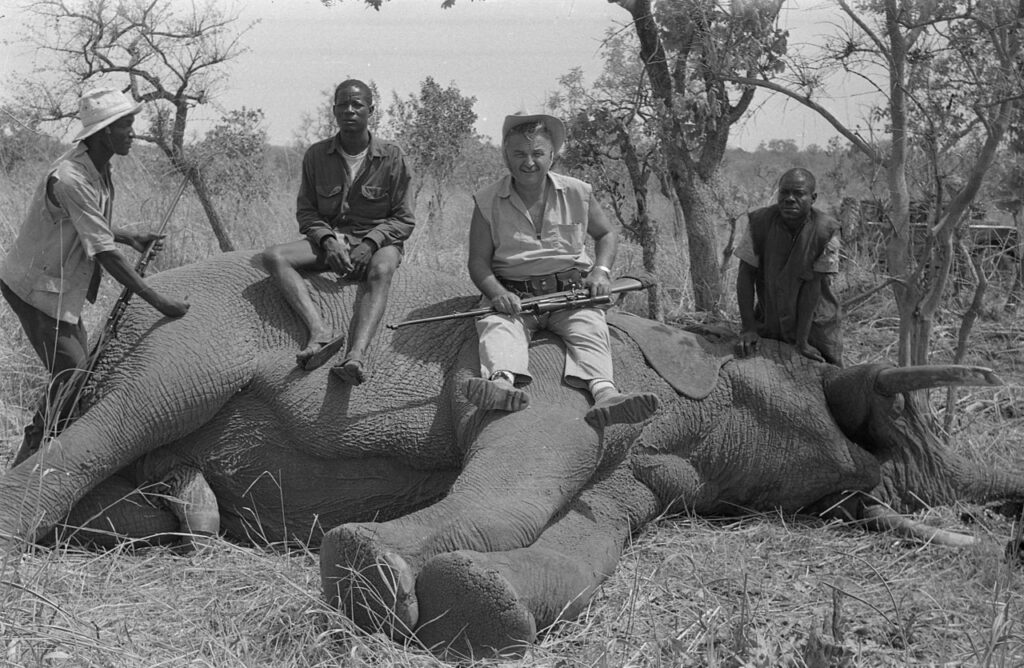
Over 70,000 animals are lost annually to trophy hunting – the killing of wild animals as a recreation. Body parts of the animal, usually the skin, antlers or head of the animal, are kept as a trophy to showcase the success of the hunt. Trophy hunting has been legalized in numerous countries such as South Africa, Botswana, Nigeria, Canada and Mexico. As heartless as it seems, trophy hunted is defended as an effective conservation strategy. The high monetary value of trophy hunting apparently provides monetary benefits to wildlife.
The Benefits of Trophy Hunting
As explained in the book “The Road to Nowhere,” the success of conservation relies heavily on the benefits the wildlife brings to the local people who live in the proximity of nature. Without any monetary or social upliftment, the local communities would not hesitate to destroy the wild animals, which in fact can be a threat to the local population’s safety and agricultural output.
Legalized trophy hunting statistics prove that it has supported local communities. Trophy hunting in Africa has added over US$400 million to the GDP of south-east African countries, providing over 50,000 jobs.
This has had a clear benefit as over 1.4 million square kilometers of wilderness is protected as hunting grounds in Africa. This figure is 22% more of the land protected by national parks in the continent. Due to the massive monetary incentives, locals are willing to protect their wildlife, as can be seen in the massive surge in bontebok population – from 100 in 1925 to around 10,000 in 2015. This is largely due to the fact that locals are less willing to illegally poach these animals.
Regardless of whether wildlife hunting is legalized or not, it will take place as a method of population control. This is largely due to man-animal conflict. However, illegal poaching would result in a lack of regulation of hunting and hence diminishing wildlife populations.
Despite the fact that trophy hunting tourism is off a significantly lower scale than ecotourism, supporters claim that its monetary incentives per person is significantly larger – a lion hunt can cost over US$20,000 – and due to this, the costs of ecotourism such as littering and noise pollution is avoided.
The Hidden Truth of Trophy Hunting
However, in numerous countries such as Botswana, the profits of trophy hunting are not borne by the local communities. Corrupt offiicials, federations and tourist companies, often keep a disproportionate amount of the income. This will hence not provide any incentives for the locals, while resulting in uncontrolled sport hunting.
While supporters also claim that since “full grown males/bulls” are generally hunted, the wildlife populations are well protected. However, on the contrary, this is extremely harmful. Firstly, less dominant males will get more breeding opportunities and hence results in a weaker gene pool being passed down. Secondly the killing of larger males may not necessary help reduce breeding of species whose population needs to be controlled. Trophy hunting has almost resulted in the silent extinction of giraffes. Furthermore, African Elephants, which have been trophy hunted for “conservation”, are not faring much better.
To conclude, while trophy hunting does have its benefits, on a moral basis, it should not be extensively used as a conservation tool until and unless, higher authorities can find a method to control its adverse impacts on wildlife.
Help us Help Them! Think Wildlife Foundation is a non profit organization with various conservation initiatives. Our most prominent campaign is our Caring for Pari intiative. Pari is a rehabilitated elephant at the Wildlife SoS Hospital. 25% of the profits from our store are donated to the elephant hospital for Pari. Other than buying our wonderful merchandise, you could donate directly to our Caring For Pari fundraiser.
